The Brief History of Argyle Trucks
A Scottish company fate: The end came after three years
A manageable chapter from international truck history is commercial vehicles produced in Scotland. The Argyle Motor Manufacturing Company from East Kilbride in the West of the country, about 15 kilometers from Glasgow, was an example of Scotland's share of British commercial vehicle production. But after just a few years, what had barely begun came to an end. After all, 25 units left the Argyle plant. In the meantime, half a century has passed and Richard Stanier from Stoke-on-Trent takes a look back at a hopeful beginning and the sudden end.
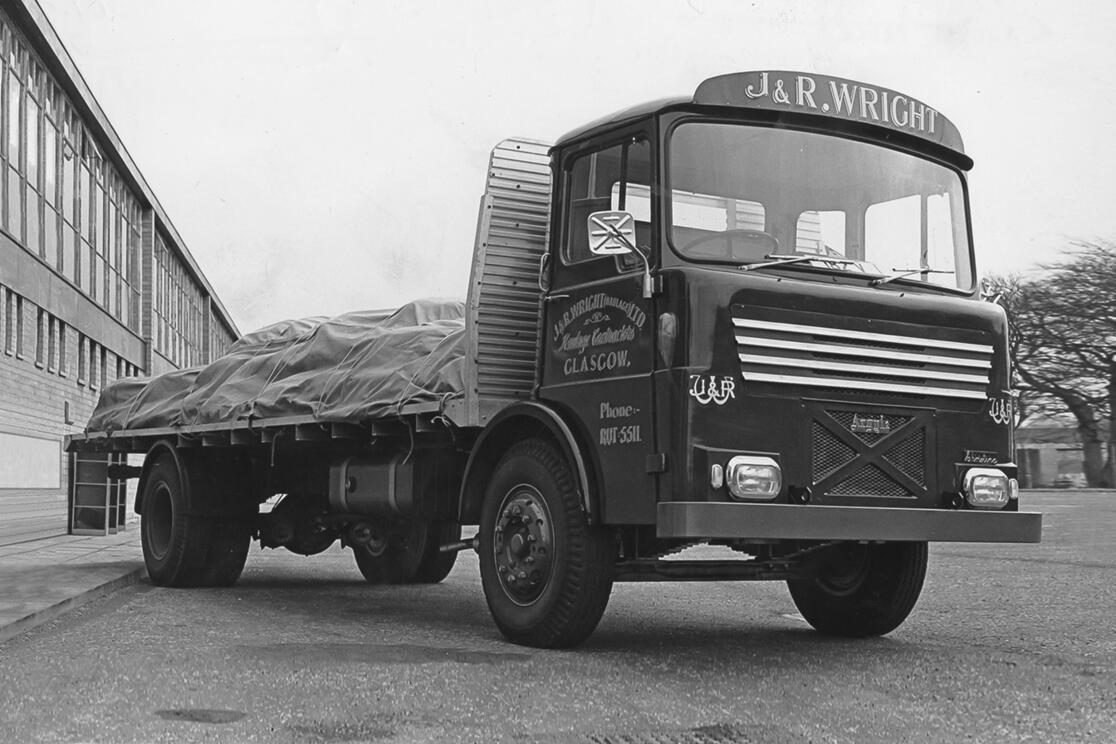
As a truck-mad child I treasured my copy of The Observer’s Book of Commercial Vehicles for 1971. It was an invaluable reference book for the familiar trucks on the roads of Britain and a taster for the previously unknown exotic marques from overseas which peppered the publication.
Amongst the intriguing vehicles in the listings was the Argyle Christina 16-ton chassis, which I was informed was a new Scottish design, and I dutifully looked out for my first sighting of such a beast which, of course, never occurred.
As an older boy my interest in collecting truck-related brochures, photos and information developed to the extent where I had enough material to piece together the brief history of the make:
William Moffat had founded Argyle Diesel Electronics Ltd in East Kilbride, South Lanarkshire, in 1963, and the business continues to this day as a diesel fuel injection and diagnostics specialist. In November 1968, Moffat established the Argyle Motor Manufacturing Company Ltd, at Flakefield Estate where he planned to offer Scottish hauliers a well-engineered chassis, with short lead times and an attentive and responsive back-up service.
The first truck to be produced was the 16-ton gross vehicle weight "Christina" which was completed in April 1970. The photo at the top of this post shows the vehicle before delivery. It was intended for J&R Wright of Rutherglen, a freight forwarding company operating within a 100-mile radius of Glasgow (photo credit: George Oliver, Glasgow).
Christina models were offered as either haulage chassis, with a 17’ 3.75” wheelbase, or later as a tipper chassis with a 12’ 6.75” wheelbase.
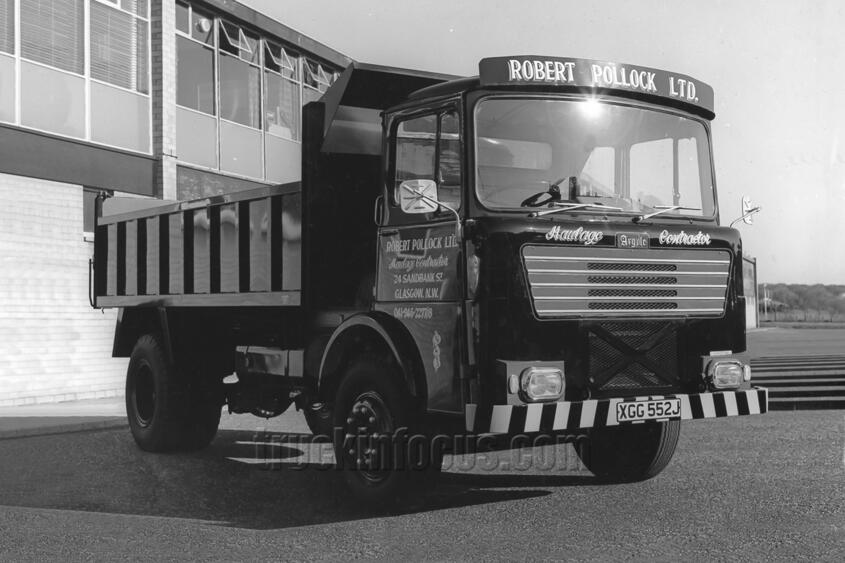
The general specification was quite a standard offering being a Perkins 6.354 engine matched to an Eaton Yale & Towne 5-speed gearbox with a Kirkstall front axle and an Eaton two-speed unit with electric operation at the rear. The cab was the popular Motor Panels Mark III model, with the styling most closely resembling the Seddon “Supa Cab”. Many English truck manufacturers sourced their cabs from the Coventry-based Motor Panels company. However, the Argyle cab differentiated with oblong headlamps and a top grille in a similar shape to the British Leyland Ergomatic design. The lower portion of the grille featured two crossed bars to resemble the St. Andrew's cross on the Scottish national flag.
A more detailed inspection of the engineering does reveal some differences to similar models already on the market at that time. Moffat set store in his vision of a quality, hand-built four-wheeler in a segment of the market not served by Foden or Atkinson.
The Christina had a straight frame, supplied by Ayrshire Metals, which enabled high yield steel to be used throughout, rather than a lower yield steel to enable a “dropped” front end. Despite this, the step height was kept at a reasonable 70 cm. Hardy Spicer 1600 series drive shafts were employed, rather than the more common 1510, and a 14” clutch fitted in preference to a 13”. The Eaton 542 ENV SME gearbox was a syncromesh unit, the brake drums were generously proportioned. The truck had spring braking all-round with Westinghouse type 24 chambers at the front, and type 30 at the rear. Burman integral power steering was fitted as standard.
The Argyle engineers also paid attention to ease of servicing with the radiator being designed to be removed easily as it was simply bolted to the top of the frame. The engine could be removed through the front by removing eight bolts from an inverted cross-member which acted as the front engine mounting. Access to electrical units was also good, and the cab did not use the standard Motor Panels floor pan. Argyle trucks had a flat floor around the driver, with good engine access through a one-piece, hinged cover.
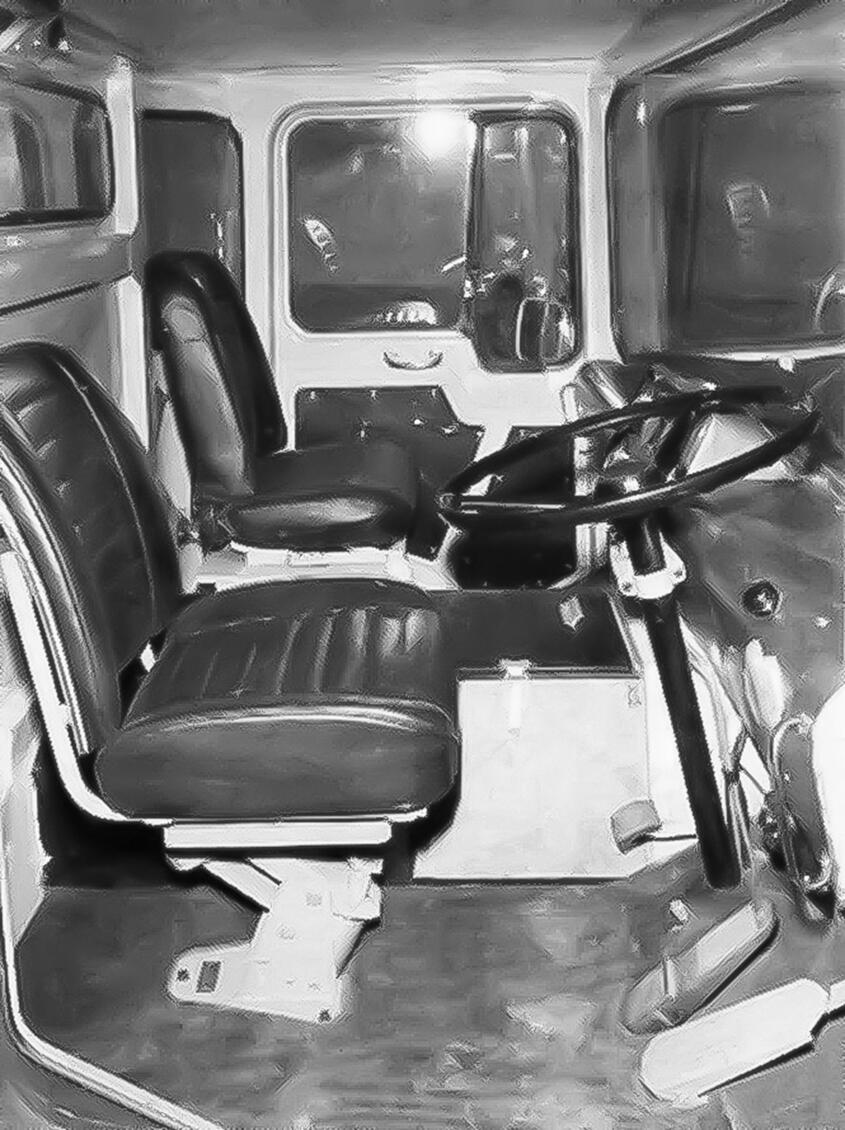
Press response was favourable in the Spring of 1970, with the first vehicle being available for limited road testing. Minor criticisms were levelled at the 3” offset seating position and the centrally-positioned dash board which incorporated indistinguishable toggle switches. Overall handling, performance, and driving characteristics were positively received. However, I have heard anecdotal reports that the Christina was prone to shaking and vibration in service, possibly due to cross-member positioning in the chassis.
Joseph Wright, the buyer of the first Argyle, told the press that he had purchased the machine after problems with delivery times for new vehicles and spares from other British manufacturers, and he was prepared to give the new model an opportunity to prove its worth. Although the Christina was about £100 more expensive and 100 kg heavier than an equivalent Seddon, Wright reported that the truck was showing great promise and was popular with the drivers.
The tipper chassis was offered from August 1970 and in the subsequent couple of years Christinas also entered service with Robert Pollock of Glasgow, A&J Clarke of Rutherglen, and WH Malcolm of Paisley.
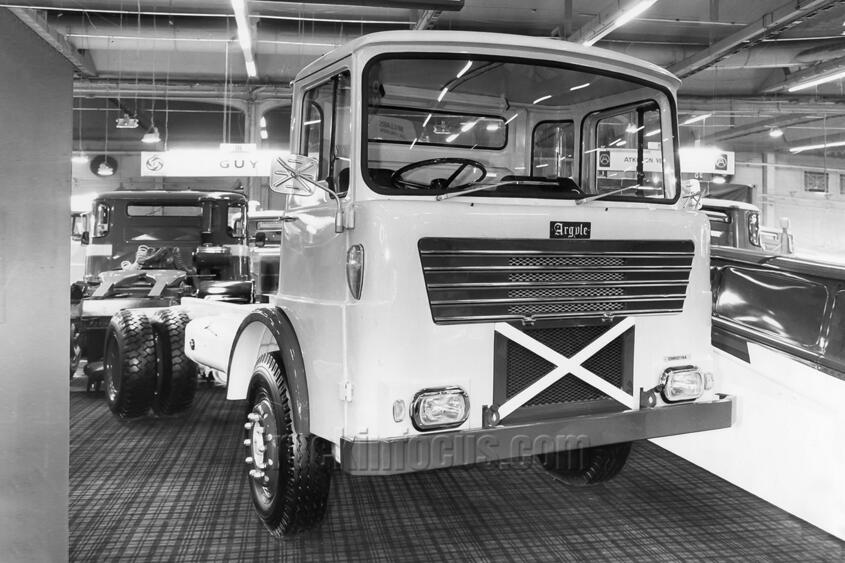
In November 1971 Argyle were represented at the Scottish Motor Show at Kelvin Hall, Glasgow, where a tipper chassis cab was exhibited, and by this time five Christina tippers were in operation with William Griffith of Whitburn.
Argyle's publicity material at the time refers to vehicles built in the 1920s under the Argyll name from Alexandria northwest of Glasgow, although they had nothing to do with the Flakefield company. And it looks forward to a bright future of co-operation with the Gibson Pendulum refuse compactor manufacturers and potential exports to Saudi Arabia.
However, by February 1973 the trade magazine "Commercial Motor" was reporting that production of the Christina had ended due to intense competition from other manufacturers in the 16-ton weight bracket. It was said that a new 24-ton six wheeler design, called the Karen, and a 32-ton tractor, named Linsay, were on the drawing board for development. Interestingly, Argyle also built a special tractor, called the Trilby, for the British Steel Corporation. This vehicle was a heavy 4x2 normal-control tractor with a scuttle and windscreen, rather than a full cab. It was powered by a Cummins 220 engine, and designed for operation at 120 tons.
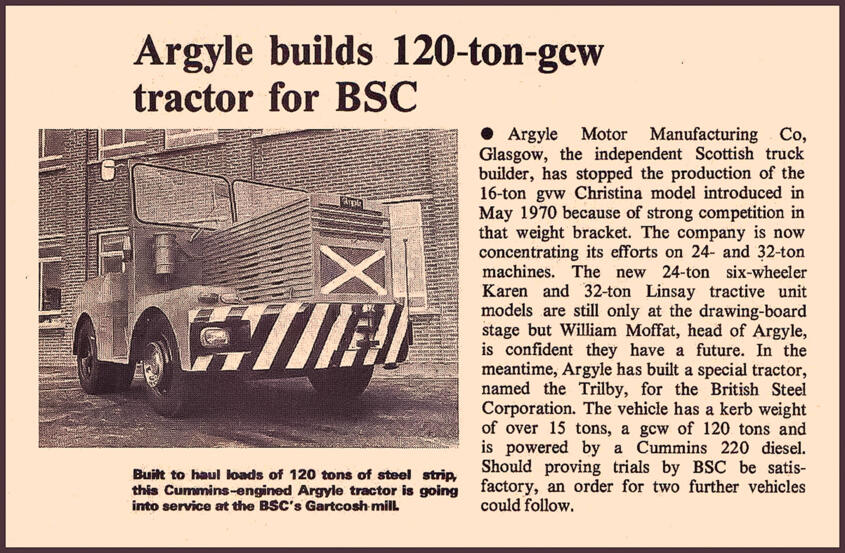
Although the Trilby was intended to be first of three vehicles ordered subject to successful proving, it is thought that only one was built, and certainly no examples of the Karen or Linsay ever reached production, meaning that vehicle manufacturing at Argyle spanned just about three years.
About a decade ago I posted some photos of the Argyle Christina on social media and these brought some information by a commentator claiming to be acting on behalf of William Moffat. He confirmed that total vehicle production had amounted to 25 units, split evenly between haulage and tipper models, with the additional vehicle being the Trilby presumably, and that none are known to exist today.
If any readers have any other Argyle information or photographs, I would be most interested to hear from them. Please contact me at richard@truckinfocus.com
Text: Richard Stanier
Photos: Richard Stanier Collection